
In the face of a multitude of technology choices and a more demanding customer in the food and beverage (f&b) supply chain, two things will make the journey manageable: a clearly defined goal and a good business plan.
Eddie Capel, CEO and president of Manhattan Associates, identified the supply chain’s goal in his opening presentation at this year’s Momentum conference: to become “commerce ready.” He defines such an enterprise as “a business designed to anticipate and deliver the best customer experience possible.” The commerce-ready enterprise depends on three key pillars – inventory, supply chain and the omnichannel. “Products, execution and customer experience,” was how Capel summed up these three elements.
A successful commerce-ready enterprise needs two types of management tools: inventory optimization and transportation management, Capel said.
Inventory and network optimization tools rank as the most widely used and most likely to deliver a competitive advantage, according to the 2015 Material Handling Institute (MHI) Annual Industry Report, “Supply chain innovation – Making the impossible possible.”
Supply chain players embrace the tools
A review of leading f&b supply chain companies indicates many are already embracing these inventory optimization and transportation management. All types of companies in the supply chain are embracing these tools: retailers, wholesalers, manufacturers, 3PLs and transportation service providers.
United Natural Foods Inc. (UNFI), the Providence, R.I.-based national distributor of natural, organic and special foods, has tripled in size in the last decade by harnessing these tools. Steve Spinner, president and CEO of UNFI, has told the media that inventory optimization has been the single most important tool in his company’s ability to grow. Inventory optimization has allowed the company to increase its inventory purchases which allowed it to meet increasing orders successfully.
Inventory optimization enables UNFI to accomplish the following, according to Spinner: create consistent supply to the customer; automate sales forecasts; provide alerts to abnormalities; and memorialize historical data.
Optimized buying decisions generate improved gross margin; which is 20 percent greater product discount in inventory optimization platform, UNFI notes in a recent investor statement.
Technology also plays a major role in UNFI’s value added services to its retail customers. The company provides intelligent ordering devices free to its customers. These allow faster orders, faster catalog downloads, access to promotion information and order status updates.
Dunkin’ Donuts/Baskin Robbins re-engineers supply chain
Inventory optimization was a key part of a supply chain overhaul at National DCP LLC, the supply chain arm of Dunkin’ Donuts and Baskin-Robbins. The company re-engineered its supply chain processes companywide without any customization in a 10-month period.
“Everything ties back to inventory,” says Mona Maurelli, a senior manager at Deloitte Consulting LLP, which assisted National DCP LLC in deploying the new ordering system.
Darrell Riekena, chief information officer at National DCP LLC, notes that the project, dubbed “Project Fresh Start,” resulted in a new ordering system. National DCP does about $2 billion in annual sales and exports to 51 countries in addition to its domestic operations.
The project improved website functionality, invoice accessibility, product availability and inventory management. One noticeable result was improved on-time deliveries. It also improved the delivery capabilities on the back end, including cleaner pallets. Invoicing and reconciliation also improved.
By centralizing these data in a single location, quality directors are now able to achieve complete visibility into all levels of the supply chain, from individual plants to supplier operations. This end-to-end, real-time view results in a safer food supply chain, higher-quality products and fewer recalls – a win-win for both manufacturers and consumers.
“This impacted everything from order entry all the way through to the delivery process,” Riekena says.
The cloud-based order entry system integrates with the company’s SAP ERP system.
National DCP LLC has deployed the new system in the Southeast region. This was accomplished in one weekend. Riekena said the next week’s deliveries all went out on time.
Supermarket chain optimizes inventory chain-wide
Times Supermarkets, the Honolulu, Hi.-based operator of supermarkets and wine shops across Hawaii, is bringing an inventory optimization solution to all its stores following a 4-month pilot in two stores located in Honolulu and Lihue. Out-of-stock levels dropped significantly and excess back-room inventory has been reduced, with associated labor savings.
The inventory management system from Des Moines, Ia.-based Itasca Retail Information Systems provides Times Supermarkets a real-time perpetual inventory, advanced consumer demand forecasts, and ordering algorithms.
“The benefits to reordering accuracy, in-stock position, and reduced back stock have been profound in those locations,” says Chris Borden, Times Supermarkets senior director of marketing. “We plan to proceed with chain wide implementation without delay.”
The company operates stores under the Times Supermarkets, Big Save, Shima’s, and Fujioka’s Wine Times banners, on the Hawaiian islands of Oahu, Maui and Kauai. It is a member of the Unified Grocers wholesale grocery cooperative.
Sargento Foods Transportation optimization yields benefits
Transportation optimization is another technology that improves transport planning and fleet utilization.
Sargento Foods Inc. recently began managing all of its inbound freight using the Kewill Transport platform optimizer and auto tender functionality, says John Josephs, general manager of transportation at the Plymouth, Wis.-based cheese maker. The optimizer allows the transportation team to plan and manage inbound and outbound freight activities from one seamless application. “It’s more efficient,” Josephs says.
The optimizer considers all available shipment methods and selects the lowest cost delivery options based on requested delivery date, order size and types of orders.
Josephs says the optimizer is driving efficiencies which is necessary as the company grows and requires more transportation capacity. The company handles about a quarter of its outbound transportation with its private fleet and outsources the rest.
Supply chain analytics make strides
With more data available, supply chain companies need to be able to organize the information in order to make the best use of it. Here is where predictive analytics comes in. Predictive analytics is the application of advanced statistical analysis of structured and unstructured data sources to identify patterns and predict future events or outcomes. It can provide a look into the future and identify emerging patterns in the marketplace that can lead to effective and personalized customer engagement strategies.
The f&b industry is only beginning to learn the benefits of predictive analysis, says John Richardson, vice president of supply chain analytics at Transportation Insight, the Hickory, N.C.-based 3PL.
“The thing that has changed is the speed that we’re able to collect data and how much data we are able to share on a real time basis,” says Richardson. He says fiber optics and GPS are allowing greater amounts of data to move faster. In addition, the Internet cloud is allowing more companies access to more data with less capital investment.
Vendors have been forced by their retail customers to provide more information about their supply chains, Richardson says. Just about every time a vendor changes anything in their supply chain, they need to inform their retail customer. Hence, speed and quantity of information are crucial. “With the customer controlling that piece of the freight, there’s more (for the vendor) to coordinate,” he says.
Transportation Insight’s Fusion Project is a web-enabled, mobile compatible portal the allows clients to access information about a company’s supply chain.
Freight as a percent of the invoice is an example of the type of information that f&b clients are paying close attention to, he says.
Analysis and visualization tools evolve
INSIGHT Inc., the Manassas, Va.-based provider of supply chain design, has developed a data analysis and visualization module that distills large, complex strategic supply chains into just a few tables that make it easy to display maps, graphical results or hierarchical relationships. The new data export facility makes it easy to exploit third party tools such as Microsoft Excel and Tableau.
The reports provide quick access to metrics such as: total system metrics; commodity metrics; procurement analysis at the supplier and raw material level; manufacturing analysis at the facility, line and product level; distribution analysis at the facility and product level; transportation analysis at the lane and product level; and product and customer segment flow path analysis.
Such network design tools can determine the right combination of supplier, manufacturing, warehousing, cross-dock and port locations, inventory levels, and transportation links. They also address issues such as strategic sourcing, mergers and acquisitions, supply chain vulnerability and sustainability.
Such tools help supply chain managers identify the components of their supply chains that are driving costs and components, says Dan Bausch, director of analytics at INSIGHT. He says f&b customers now have the option of using the new concentrated visualization reports in addition to the 160-plus existing reports in the system.
SKU proliferation continues
The biggest supply chain challenge facing f&b is SKU proliferation, says Jim Barnes, CEO of Enspire Commerce, a division of enVista, the Carmel, Ind.-based supply chain consultancy and IT services firm. Enspire Commerce provides a cloud-based, single platform enterprise commerce management solution that delivers a unified customer experience – from shopping to fulfillment – for retailers, distributors, manufacturers and 3PLs. It’s not simply the volume of SKUs that concerns the supply chain, according to Barnes; it’s the attributes that customers are asking for, such as ingredients, certifications, measurements, etc.
The problem that supply chains have to address, says Barnes, is that not all customers want all of the SKU attributes. Hence, the supply chain has to make it easy for the parties to be able to access the attributes they want. What’s important to a distributor might not be to a retailer.
Product information master (PIM) is a software that manages SKU attributes.
“We’ve created an attribute system that allows multiple organizations to pull from a single source and utilize attributes that are important to their business,” he says.
The f&b supply chain has more tools than ever to provide reliable transportation and logistics services. All players face the challenge of understanding how the various technologies meet their business needs and sustain the best possible customer relations.
CHEP Leverages Experience With Collaborate Supply Chain Solutions
Some of the most innovative supply chain solutions have more to do with utilizing knowledge and experience rather than new technology.
CHEP, a global supply chain solutions provider, has introduced a “Solutions Portfolio” to address supply chain challenges like product damage, inefficient unit loads, empty trailer miles and more. Due to its unique position across the entire supply chain, CHEP has captured its learnings and formalized its expertise into solutions that encompass enterprise logistics, supply chain platforms, transportation, international trade, manufacturing, warehousing, harvesting, processing, distribution and store fulfillment, in addition to sustainability and supplier diversity.
As an example, CHEP brings together two unique capabilities — unit load configuration and packaging testing — in one solution at its Innovation Center. Together they can configure maximum load efficiency for every load and test configurations to ensure real-world success. “We’ll configure it and validate it in our facility,” says Todd Hoff, vice president of marketing for CHEP North America.
The unit load optimization examines individual packaging dimensions, the total unit load weight, and the weight capacity of the truck. Each case pack is then placed in the ideal location and direction, building a unit load design that can carry the maximum amount of product securely with minimal product damage. The solution can reduce transport, handling, pallets and labor costs.
CHEP’s network of lanes, facilities and customers enables it to find more overlaps with its customers’ network to identify savings, through fleet optimization, carrier synergies and customer pickup.
For customers with a dedicated fleet, CHEP can identify closed loop opportunities and arrange for customers to transport its extensive backhaul freight. A customer can earn revenue while CHEP gains capacity. And empty miles are eliminated — along with CO2 emissions.
A major retailer collaborated closely with CHEP to apply the new transportation solution and is projected to fill almost 1 million empty trailer miles in 2015, generating $2.5 million in incremental revenue. Similarly, grocery retailers using the unit load optimization solution reduced damage at their distribution centers and each saved about $300,000 throughout their supply chains.
For more information:
CHEP, 800-243-7872, chep.com
Deloitte Consulting LLP, 703-251-1000, deloitte.com
Enspire Commerce, 844-367-7473, enspirecommerce.com
enVista Corp., 877-684-7700, envistacorp.com
Insight Inc., 703-366-3061, insightoutsmart.com
Itasca Retail Information Systems, 515-223-0045, Itasca-retail.com
Kewill Transport, 866-649-1900 kewill.com
Manhattan Associates, 877-596-9208, manh.com
Material Handling Institute, 704-676-1190, mhi.org
Transportation Insight, 828-485-5000, transportationinsight.com






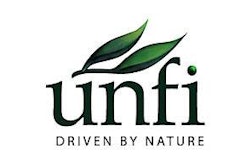

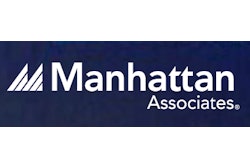




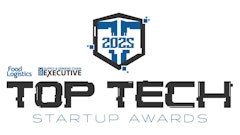

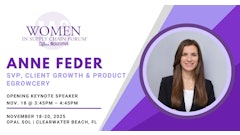
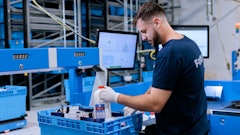
![Top Tech Startup Logo 2025 Vertical [color] (1)](https://img.foodlogistics.com/mindful/acbm/workspaces/default/uploads/2025/07/top-tech-startup-logo-2025-vertical-color-1.pZkBK95TLe.png?ar=16%3A9&auto=format%2Ccompress&bg=fff&fill-color=fff&fit=fill&h=135&q=70&w=240)


